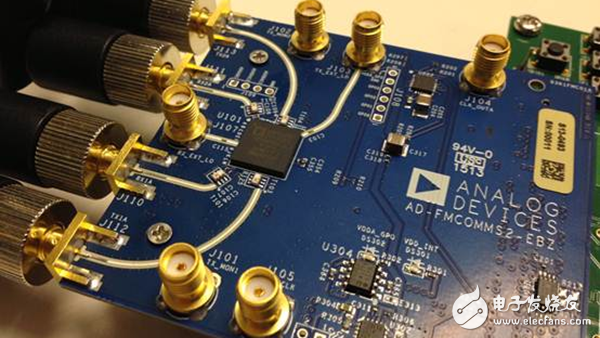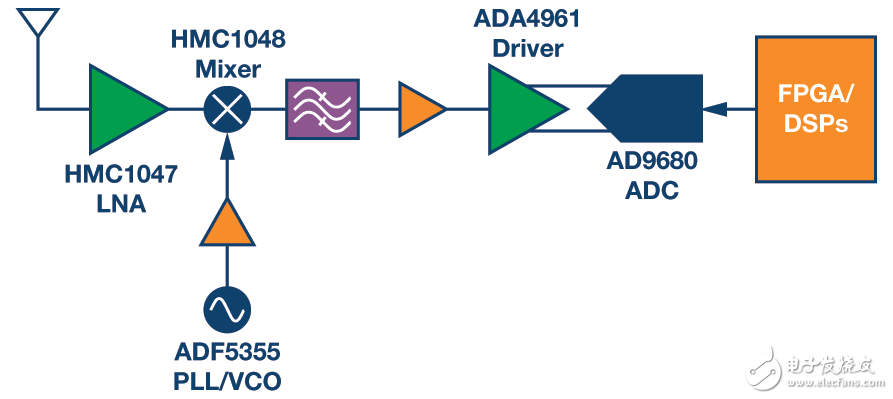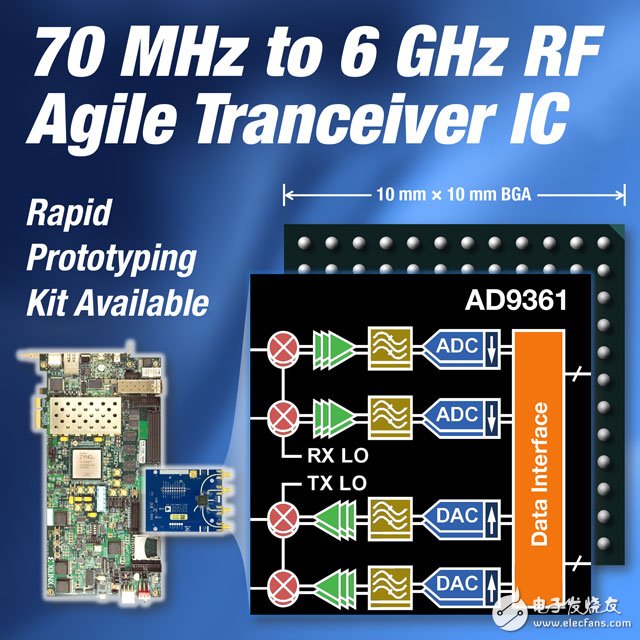Design engineers working on next-generation communication systems, especially in aerospace applications, are now tasked with developing highly advanced and configurable systems that can integrate a wide range of functions and requirements. These systems often replace previously standalone solutions, offering benefits such as reduced system complexity, smaller size, lighter weight, and lower power consumption (SWaP). However, this approach introduces new challenges, particularly in supporting cognitive and real-time reconfiguration. Fortunately, the emergence of high-performance, broadband devices offers promising solutions, enabling systems to meet diverse operational needs without sacrificing performance or flexibility.
The ultimate aim of many future systems is to achieve a fully software-defined architecture, allowing for dynamic changes, field updates, or factory-configured operations with minimal hardware modifications. This requires a single hardware platform to support multiple operating modes, each with its own technical specifications. The challenge lies in ensuring that the underlying hardware can handle all possible configurations efficiently.
An example of such a system is a radar and communication platform, which must support both multi-mode radar and electronic support measures (ESM), as well as multi-waveform communication and signal intelligence (SIGINT). These systems often need to combine broadband and narrowband functions, which may have conflicting requirements in terms of linearity, dynamic range, and other parameters. Without flexibility in design, engineers might have to compromise on power or size to meet these demands.
Consider an X-band radar system paired with a broadband ELINT (Electronic Intelligence) system. While the radar operates within a relatively narrow frequency range, the ELINT system spans a much wider band, from 2 GHz to 18 GHz. If both systems must be integrated into a single platform, trade-offs in performance, power, or size may become necessary. For instance, the signal chain might sacrifice linearity or power efficiency to accommodate the broader bandwidth required by the ELINT system.

This same dilemma appears at the device level. Broadband systems often require compromises in key performance metrics such as phase noise, power consumption, or linearity. Table 1 below compares the performance of a wideband PLL with an integrated VCO (ADF4351) against a narrowband version (HMC837). As shown, the narrowband device typically outperforms in terms of phase noise and power consumption but sacrifices flexibility.
Table 1. Performance Comparison of Typical Wideband and Narrowband PLLs with Integrated VCO
Wideband PLL with integrated VCO ADF4351 | Narrowband PLL with integrated VCO HMC837
Output frequency: 0.035 GHz – 4.4 GHz | 4.4 GHz
Quality factor: –221 dBc/Hz | –230 dBc/Hz
VCO P/N @ 100 kHz: –114 dBc/Hz | –120 dBc/Hz
VCO P/N @ 1 MHz: –134 dBc/Hz | –147 dBc/Hz
Dimensions: 5 mm × 5 mm | 6 mm × 6 mm
Power consumption: 370 mW | 168 mW
While some trade-offs are inevitable when integrating multiple system requirements into a single platform, next-generation RF and microwave devices, along with high-speed ADCs, are helping to reduce the pressure on system designers. Advances in CMOS and SiGe processes have enabled more digital functionality to be embedded in these devices, providing not only greater flexibility but also enhanced signal processing capabilities. These features allow for calibration or digital compensation, bringing overall performance closer to that of dedicated narrowband systems while still supporting wideband operations.
Figure 1 illustrates a general-purpose broadband receiver architecture based on recent advancements in RF and microwave technology. Although additional filtering and gain stages may be needed in practice, the underlying device’s flexibility supports a wide bandwidth monitoring system. Configurable digital signal processing further enhances this capability, allowing the system to perform narrowband functions when required and dynamically switch between operating modes in real time.

Although the figure shows a basic signal chain, it highlights the growing trend of moving digital conversion closer to the antenna, increasing system flexibility. Components like the HMC1049 and HMC1048 offer excellent IP3 performance and support both narrowband and wideband operations, demonstrating how process advancements enable devices to meet multiple specifications without requiring complex digital features.
The ADF5355 PLL integrates a VCO that covers a wide frequency range, from 54 MHz to 13.6 GHz. Its four independently integrated VCO cores allow for flexible operation across multiple bands, while digital calibration logic ensures optimal performance. The device maintains low phase noise and spurious levels, making it suitable for both wideband and narrowband applications.
The ADA4961 ADC driver provides excellent wideband performance and linearity, with SPI and digital control for optimized configuration. It supports IMD3 performance of 90 dBc at 500 MHz and –87 dBc at 1.5 GHz, while fast-start functionality helps prevent ADC saturation. This makes it ideal for dynamic and adaptive signal chains.
The AD9680 ADC, one of the latest high-speed converters, supports up to 1 GSPS at 14-bit resolution. Its ability to undersample IF signals above 1 GHz aligns with the trend of moving digital conversion closer to the antenna. With integrated DDC, the device can customize output bandwidth, improving SNR and enabling flexible configuration for both wideband and narrowband operations.
The TAD9680 ADC extends this flexibility, supporting both wideband and narrowband functions through its digital signal processing capabilities. When DDC is disabled, it can monitor bandwidths over 500 MHz. With DDC enabled, it can digitally mix signals to baseband and reduce data rates, enhancing system performance and adaptability.
Similar devices and integrations are available for the transmitter side, with DACs featuring configurable interpolation filters and digital upconversion functions. These components help bridge the gap between analog and digital domains, enabling more efficient and flexible system designs.
The integration of RF ICs like the AD9361 exemplifies this shift, blurring the lines between digital and analog functions. With direct conversion architecture and integrated digital filtering, the AD9361 supports a wide range of frequencies and bandwidths, making it ideal for radar, communications, and data links. Digital calibration and processing help overcome traditional challenges, enabling unprecedented levels of integration and flexibility.

Previously, achieving such high levels of integration was considered impractical. However, modern devices now offer better performance, lower power consumption, and higher flexibility, reducing the gap between discrete and integrated solutions. As digital and analog functions become more tightly coupled, the potential for truly software-defined systems grows.
The long-term goal of a software-defined system is to have a single transceiver capable of supporting versatile and cognitive applications. While this vision remains distant, ongoing advancements in semiconductor technology and digital signal processing bring us closer to realizing it. In the near future, a single device or a cascaded broadband system may be able to meet all application needs, making software-defined systems a reality.
Fiber Optic Patch Panel,Fiber Patch Panel,Fiber Distribution Panel,Optical Patch Panel
Cixi Dani Plastic Products Co.,Ltd , https://www.danifiberoptic.com